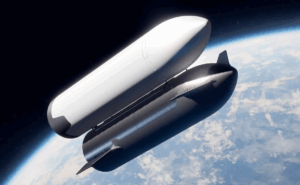Shrinking animals are a potentially deadly consequence of global warming
Lifeless bodies of birds litter the sidewalks of Chicago in the fall of 1978. While most would find it haunting, Dr. David Willards sees the situation as a perfect research opportunity. As an ornithologist at the nearby Field Museum in Chicago, he had received a tip about swarms of birds on their journey south crashing into the McCormick Place Convention Center. He took them back to the museum to be measured and stored in the museum’s collection, returning to the graveyard of birds the next day in search of more for examination. Four decades have passed and Willard’s team of scientists and volunteers has helped collect more than 100,000 birds from the deadly windows. These birds help make up a significant 20 percent of the museum’s ornithology collections. One fundamental insight made by Field Museum scientists during examination of the birds is that they have begun to shrink in body size. The change in bird sizes is a shocking discovery, and the researchers began to investigate a possible cause. While the birds represent massive loss of life, they also opened the door to fascinating discoveries about changes in the woodland ecosystem (1).
:format(webp)/cdn.vox-cdn.com/uploads/chorus_image/image/69545082/Drawer_of_birds_in_FM_collections___c__Field_Museum__Ben_Marks.16.jpg)
Researchers worked day and night searching for an explanation as to why the birds were changing size so rapidly. One fundamental insight made by Field Museum scientists during examination of the birds is that they have begun to shrink in body size due to an overall rise in temperatures in the woodland ecosystem. The trend is not just being seen in birds, as global warming is altering the size of all kinds of creatures. Many animals are already facing threats that can endanger the possibility of prolonged survival. Bergman’s rule, an ecology principle, states that individuals of warm blooded populations, for instance birds or mammals, will become larger in cooler climates and smaller in warmer ones. This is because thermoregulation is easier for smaller organisms than larger organisms. The science behind this is comparable to melting butter or ice: smaller portions liquify faster due to the size to surface area ratio of the object. Birds are reducing in size in two ways; evolution and loss of body mass after birth. If these animals continue to shrink at different rates, many ecosystems could be majorly impacted. This could not only bring many species to the brink of extinction but it could also throw a wrench into the ecosystems that humans rely on. Seeing these changes appearing in such species is worrisome yet unfortunately unsurprising (1).
During the largest warming period in the early Eocene about 56 million years ago, temperatures increased between five and eight degrees celsius within 10,000 years. Comparing fossilized teeth from this time with teeth from an earlier date displayed a decrease in size within animals. Also associated with shrinking animals is another warming event called the Eocene Thermal Maximum 2. Scientists used this warming event along with the first Eocene to understand the future of global warming. If current trends continue, it is expected that the planet will be 1.5 degrees Celsius warmer than pre-industrial levels by 2040, with temperatures only increasing from there. Two ecologists wrote a perspective for the journal Nature Climate Change in 2011 explaining that “Reductions in body size in fossils are particularly informative of what we can expect in the coming century” (2).
While researchers are confident that global warming will shrink animals, they are still searching for the implications of diminishing size. It is often argued that the Earth has seen these trends in temperature before. In many major periods of warming, animals adapted to drastic changes. On a major scale, birds were able to evolve from dinosaurs millions of years ago. However, the world is nowhere near similar to what it was during the Eocene, and is warming at an unprecedented rate (about ten times faster than the average warming following ice ages). This means that most animals won’t have nearly enough time to adapt to their surroundings. While discussing the current shrinking of animals, Dr. Weeks states, “the idea that they’re going to happily evolve is an oversimplification”. The shrinking of animals has many effects on the future of the species beyond the change in body size. For many types of animals, a smaller size leads to lower fertility rates, creating a dangerous situation for the species’ future. Amphibians, in particular, face danger in shrinkage, as a smaller frame makes them more likely to dry out during a drought (1). A change in body size can also impact species that partake in seasonal migration. Luckily, birds have managed to adapt to this by shrinking in body size but expanding in wing size. Shrinkage is predominantly dangerous to the stability of an ecosystem’s food chain. For example, if a predator shrinks slower than the prey, it may resort to eating more prey to get enough nutrients. If animals were to shrink at the same rate there would be less of a concern as the ecosystem would become smaller, but still remain functional. Unfortunately, this is not the case (2).

While all these changes in the ecosystem can be jarring, hope remains. Many researchers are attempting to solve this issue by researching ways to reverse these changes. Dr. Weeks has entertained the idea that warming birds while they are still in the developmental stage may actually reverse the shrinkage seen today. These consequences need to be considered by researchers when pondering the future of our planet: how will global warming affect the world outside of human life, and how reversible are the consequences seen today (1)?
Bibliography:
1. Jones, B (2021, June 6). Animals are shrinking. Blame climate change. Vox. Retrieved from
https://www.vox.com/22558979/animals-birds-shrinking-size-heat-climate-change
2. Langley, L (2021, November 12). Climate change is shrinking many Amazonian birds. National Geographic. Retrieved from https://www.nationalgeographic.com/animals/article/climate-change-is-shrinking-many-amazonian-birds







Comments are closed.